Starbucks Bundle
Who Really Owns Starbucks?
Ever wondered who pulls the strings at the global coffee giant? Understanding Starbucks SWOT Analysis is crucial, but the question of ownership unlocks a deeper understanding of its strategic moves and future direction. From its humble beginnings to its current status as a global behemoth, the story of Starbucks is intricately linked to its ownership structure. This article dives into the core of Starbucks's identity.
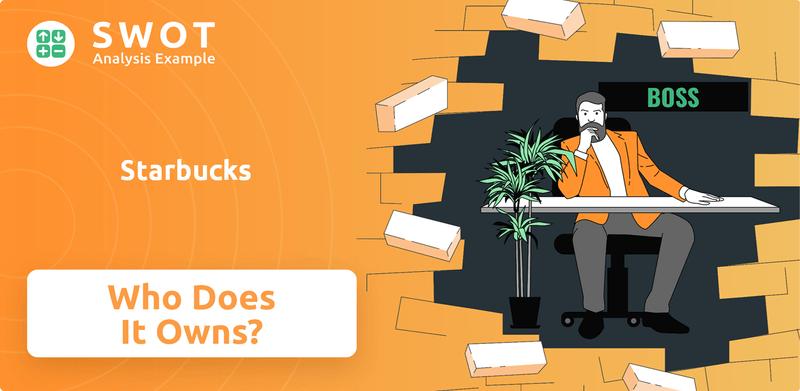
The journey of Starbucks, from a single store to a multinational corporation, is a compelling narrative of growth and evolution. Exploring "Who owns Starbucks" reveals the forces behind its expansion, its response to market changes, and its commitment to its shareholders. Knowing the Starbucks parent company and its ownership structure is key to understanding its market capitalization and the influence of major shareholders. This deep dive into Starbucks ownership will give you a comprehensive view of the company.
Who Founded Starbucks?
The story of Starbucks's history begins in 1971 with three founders: Jerry Baldwin, Zev Siegl, and Gordon Bowker. Their vision was simple: to introduce high-quality, freshly roasted coffee to the Seattle market. This marked the beginning of what would become a global coffee empire, initially named Starbucks Coffee, Tea and Spice.
The founders pooled their resources to establish the first store at 2000 Western Avenue in Seattle. While the exact initial equity split isn't publicly detailed, it's understood that the founders were equal partners. Their backgrounds – Baldwin as an English teacher, Siegl a history teacher, and Bowker a writer – contributed to the company's unique culture.
Initially, Starbucks was self-funded, with no significant external investors. The focus was on sourcing and roasting premium coffee beans. This early phase laid the groundwork for the brand's reputation for quality and its eventual expansion.
Jerry Baldwin, Zev Siegl, and Gordon Bowker founded Starbucks in 1971.
The founders made a modest initial investment to start the company.
The initial focus was on sourcing and roasting high-quality coffee beans.
The founders were equal partners in the initial venture.
The founders sold Starbucks to Howard Schultz for $3.8 million in 1987.
The sale marked a shift in control and a new strategic path for the company.
A significant turning point in the Starbucks ownership came in 1987 when the founders sold the company to Howard Schultz. Schultz, who had joined in 1982, envisioned expanding beyond selling beans to operating coffee bars. This vision differed from the founders' initial focus. The sale, for $3.8 million, marked a complete buyout and fundamentally altered the company's direction. Today, the Starbucks parent company is publicly traded, with major shareholders including institutional investors. The Starbucks corporation has grown significantly since its early days, with a market capitalization that fluctuates but remains substantial. The current Starbucks CEO is Laxman Narasimhan, who took over in March 2023. As of May 2024, the company operates over 38,000 stores globally.
Here are some key points about the early ownership and founders of Starbucks:
- The original founders were Jerry Baldwin, Zev Siegl, and Gordon Bowker.
- They sold the company to Howard Schultz in 1987.
- The initial focus was on selling high-quality coffee beans.
- The sale to Schultz marked a significant change in the company's direction.
Starbucks SWOT Analysis
- Complete SWOT Breakdown
- Fully Customizable
- Editable in Excel & Word
- Professional Formatting
- Investor-Ready Format
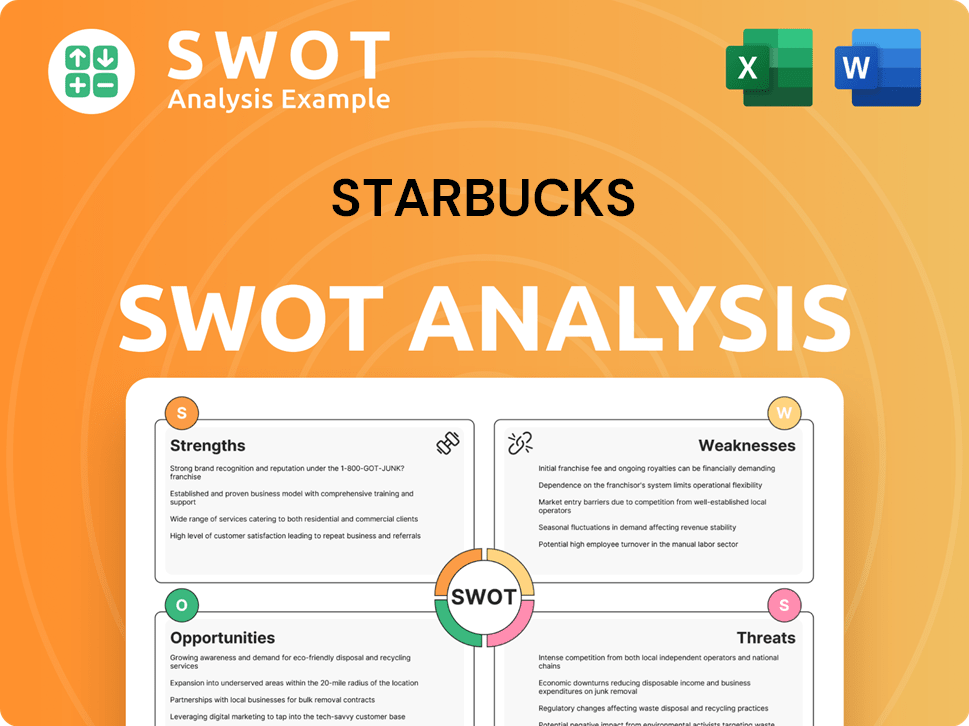
How Has Starbucks’s Ownership Changed Over Time?
The evolution of Starbucks ownership has been a significant journey, transforming from a privately held entity to a publicly traded corporation. The pivotal moment in this transition was the Initial Public Offering (IPO) on June 26, 1992. The IPO, priced at $17 per share, marked a turning point, opening the doors to a wide range of public shareholders and fundamentally altering the company's ownership structure. At the time of the IPO, the market capitalization of the company was approximately $271 million.
Since its IPO, the Starbucks parent company's ownership has largely shifted toward institutional investors. This shift has reshaped the company's governance and strategic direction. The influence of these large investment firms is evident in the company's quarterly earnings calls and investor presentations, where management often addresses concerns and strategies aligned with shareholder interests.
| Key Event | Date | Impact on Ownership |
|---|---|---|
| Initial Public Offering (IPO) | June 26, 1992 | Transitioned from private to public ownership, opening to public shareholders. |
| Growth and Expansion | 1990s - Present | Dilution of individual ownership, increased institutional ownership. |
| Ongoing Institutional Investment | 2000s - 2025 | Continued shift towards institutional investors, influencing corporate strategy. |
As of early 2025, the major stakeholders in Starbucks corporation are primarily large asset management firms, mutual funds, and index funds. These institutional investors hold substantial percentages of Starbucks' outstanding shares. For instance, The Vanguard Group, Inc. held 8.95% of shares as of March 31, 2024, and BlackRock Inc. held 7.42%. These large institutional investors significantly influence the company's strategy and governance, shaping decisions related to board elections, executive compensation, and corporate initiatives. The collective voting power of these investors often drives the company's environmental, social, and governance (ESG) efforts, impacting sustainability and labor practices.
Who owns Starbucks? The primary owners of Starbucks are institutional investors. These investors significantly influence the company's strategic direction and corporate governance.
- Vanguard Group, Inc.
- BlackRock Inc.
- State Street Corp.
- Capital Research Global Investors
- Fidelity Management & Research Co. LLC
Starbucks PESTLE Analysis
- Covers All 6 PESTLE Categories
- No Research Needed – Save Hours of Work
- Built by Experts, Trusted by Consultants
- Instant Download, Ready to Use
- 100% Editable, Fully Customizable
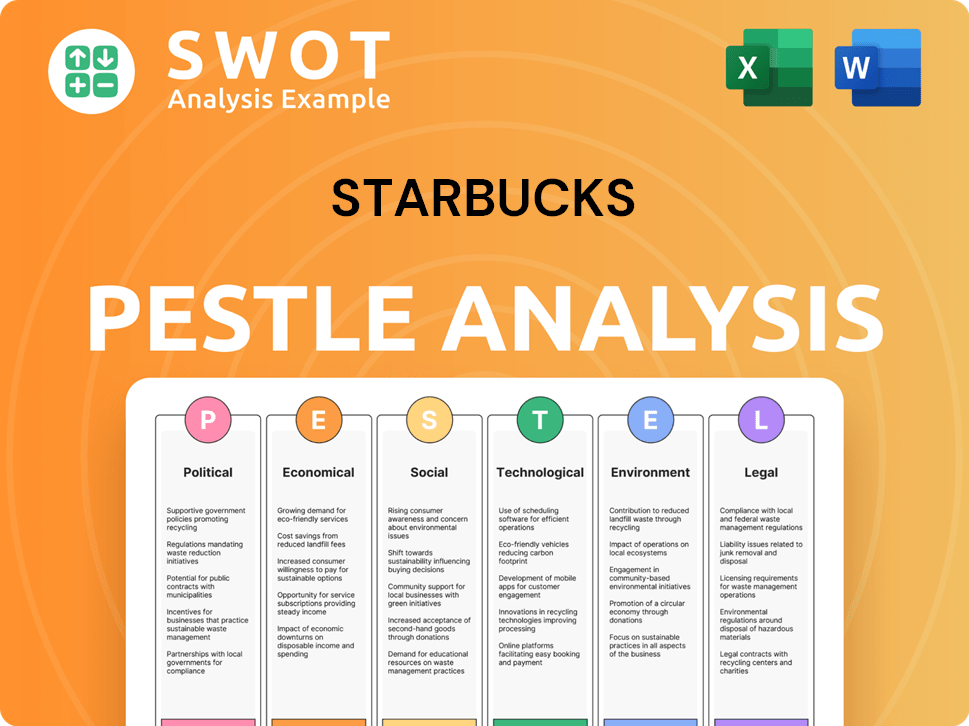
Who Sits on Starbucks’s Board?
The current Board of Directors at the Starbucks Corporation, as of early 2025, plays a critical role in its governance. The board includes a mix of independent directors and those with ties to the company. Mellody Hobson serves as the independent chair. Other members include Kevin Johnson, former CEO, and various independent directors with extensive corporate experience. The board's composition reflects diverse backgrounds in finance, retail, technology, and global business, ensuring a broad range of expertise to guide the company's strategic direction. The board's decisions are subject to shareholder votes and influence, demonstrating the impact of the collective voting power held by its broad base of investors.
The board's structure is designed to ensure fiduciary responsibility and objective decision-making. While specific board members representing major shareholders like Vanguard or BlackRock are not typically appointed, the board generally includes independent directors alongside executives or former executives of the company. This structure helps balance the interests of various stakeholders, including shareholders, employees, and customers. The board's oversight extends to key areas such as executive compensation, environmental policies, and social initiatives, reflecting the company's commitment to corporate responsibility. You can learn more about the Growth Strategy of Starbucks.
| Board Member | Title | Key Role |
|---|---|---|
| Mellody Hobson | Independent Chair | Oversees board meetings and governance |
| Kevin Johnson | Former CEO | Provides insight into company operations |
| Independent Directors | Various | Offer expertise in finance, retail, and technology |
Starbucks operates under a one-share-one-vote structure. This means that each common share typically grants one vote on corporate matters. This arrangement ensures that voting power is directly proportional to the number of shares owned. There are no publicly known dual-class shares or special voting rights that grant outsized control to specific individuals or entities. In recent years, the company has faced scrutiny, particularly concerning labor relations and unionization efforts. The board's decisions on executive compensation, environmental policies, and social initiatives are subject to shareholder votes and influence, demonstrating the impact of the collective voting power held by its broad base of investors.
The ownership of Starbucks is primarily through its publicly traded shares. Major institutional investors hold significant portions of the company's stock, influencing corporate decisions. The board of directors oversees the company's strategic direction and governance.
- The company is a publicly traded entity.
- Major shareholders include institutional investors.
- The board of directors manages governance.
- Voting power is proportional to share ownership.
Starbucks Business Model Canvas
- Complete 9-Block Business Model Canvas
- Effortlessly Communicate Your Business Strategy
- Investor-Ready BMC Format
- 100% Editable and Customizable
- Clear and Structured Layout
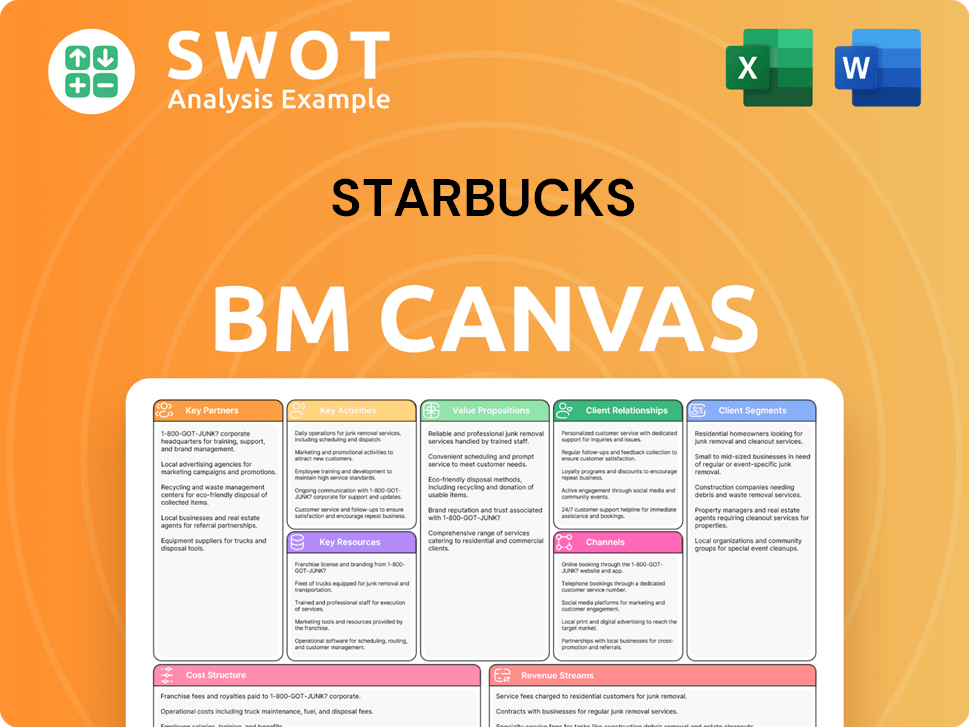
What Recent Changes Have Shaped Starbucks’s Ownership Landscape?
Over the past few years (2022-2025), the Starbucks ownership structure has seen subtle shifts, mainly due to market forces and institutional investments. The company has used share buybacks to reduce the number of outstanding shares, potentially increasing the ownership percentage of existing shareholders. Leadership changes, such as the departure of former CEO Kevin Johnson in 2022 and the appointment of current CEO Laxman Narasimhan, have also influenced investor confidence and stock performance. These changes are crucial in understanding who owns Starbucks and the dynamics of its shareholder base.
Industry trends, like the rise of institutional ownership by passive index funds and large asset managers, also play a role. These investors often prioritize ESG (Environmental, Social, and Governance) factors. Founder dilution is a natural consequence of growth; while Howard Schultz remains a significant shareholder, his percentage is less than in the early days. The Starbucks corporation is focused on global growth and digital innovation to enhance shareholder value. The company's strategic moves and adaptation to consumer preferences will continue to shape its ownership profile.
| Metric | Value (as of Q2 2024) | Source |
|---|---|---|
| Market Capitalization | Approximately $95 billion | Yahoo Finance |
| Institutional Ownership | Around 70% | Nasdaq |
| Shares Outstanding | Approximately 1.15 billion | Starbucks Investor Relations |
The company's commitment to adapting to market trends and consumer demands is a key factor in shaping its future. To learn more about the company's strategic direction, you can read about the Growth Strategy of Starbucks.
The majority of Starbucks is owned by institutional investors. Significant shareholders include large asset management firms and index funds. These entities influence the company's strategic decisions and financial performance. Understanding the ownership structure is crucial for investors.
Leadership changes, such as the appointment of the current Starbucks CEO, Laxman Narasimhan, affect investor confidence. These changes can influence stock performance and the stability of the shareholder base. The company's strategic direction is often shaped by its leadership.
Share buybacks and dividend policies directly impact the attractiveness of Starbucks shares to investors. These financial strategies are designed to enhance shareholder value. The company's capital allocation plans are essential for understanding its financial health.
The company's focus on global growth, digital innovation, and store optimization will continue to shape its ownership profile. The ability to adapt to consumer preferences and market conditions is vital. Continuous efforts to adapt to consumer preferences and market conditions will continue to shape its ownership profile as investors react to its performance and strategic direction.
Starbucks Porter's Five Forces Analysis
- Covers All 5 Competitive Forces in Detail
- Structured for Consultants, Students, and Founders
- 100% Editable in Microsoft Word & Excel
- Instant Digital Download – Use Immediately
- Compatible with Mac & PC – Fully Unlocked
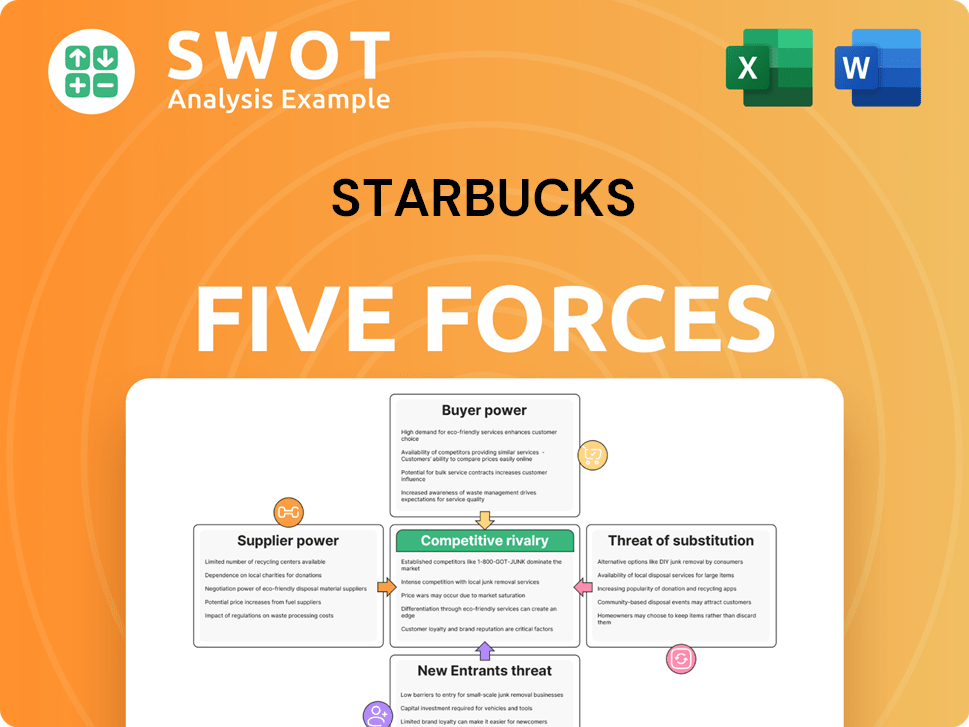
Related Blogs
- What are Mission Vision & Core Values of Starbucks Company?
- What is Competitive Landscape of Starbucks Company?
- What is Growth Strategy and Future Prospects of Starbucks Company?
- How Does Starbucks Company Work?
- What is Sales and Marketing Strategy of Starbucks Company?
- What is Brief History of Starbucks Company?
- What is Customer Demographics and Target Market of Starbucks Company?
Disclaimer
All information, articles, and product details provided on this website are for general informational and educational purposes only. We do not claim any ownership over, nor do we intend to infringe upon, any trademarks, copyrights, logos, brand names, or other intellectual property mentioned or depicted on this site. Such intellectual property remains the property of its respective owners, and any references here are made solely for identification or informational purposes, without implying any affiliation, endorsement, or partnership.
We make no representations or warranties, express or implied, regarding the accuracy, completeness, or suitability of any content or products presented. Nothing on this website should be construed as legal, tax, investment, financial, medical, or other professional advice. In addition, no part of this site—including articles or product references—constitutes a solicitation, recommendation, endorsement, advertisement, or offer to buy or sell any securities, franchises, or other financial instruments, particularly in jurisdictions where such activity would be unlawful.
All content is of a general nature and may not address the specific circumstances of any individual or entity. It is not a substitute for professional advice or services. Any actions you take based on the information provided here are strictly at your own risk. You accept full responsibility for any decisions or outcomes arising from your use of this website and agree to release us from any liability in connection with your use of, or reliance upon, the content or products found herein.